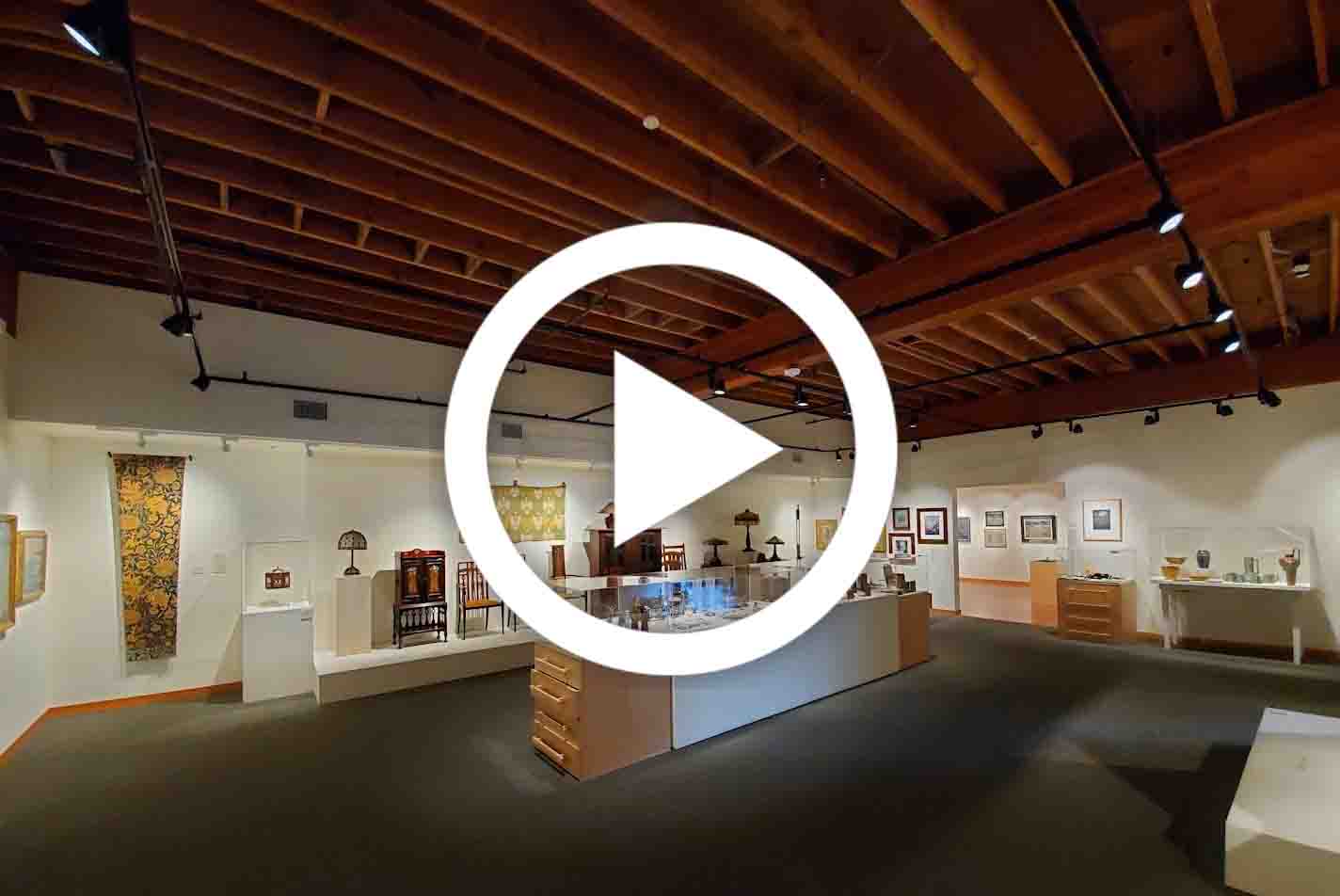For today’s Virtual Visit to Cascadia Art Museum, volunteer docent Shelley is back with a glimpse into our Northwest Collects exhibition. Shelley will discuss the influence of the Arts and Crafts movement on American art and design.
The Arts and Crafts Movement
The Arts and Crafts movement began in Britain and spread across Europe and throughout North America from the latter half of the 19th century to the 1920s. The movement was a reaction to the mass-produced items of the Industrial Revolution, which Arts and Crafts practitioners felt had become too ornate and impractical, with no thought given to their intended function. These craftspeople sought a return to traditional craft methods – “the art of the common people.”
Roycroft
Part of the Arts and Crafts movement, Roycroft was a reformist community of craftspeople and artists that formed in 1895 in East Aurora, New York. The work of the “Roycrofters” strongly influenced American architecture and design in the 20th century. The name Roycroft was selected in part for its meaning of “king’s craft” – harkening back to the guilds of early modern Europe whose members exclusively created items for royalty due to their skill level and talent.
The Roycroft community attracted printers, furniture makers, metalsmiths and leathersmiths and their creed became “A belief in working with the head, hand and heart and mixing enough play with the work so that every task is pleasurable and makes for health and happiness.” By 1910, almost 500 people were part of the Roycroft community. In 1915, the founder, Elbert Hubbard, and his wife, suffragist Alice Moore Hubbard, died in the sinking of the RMS Lusitania and the community fell into decline.
In this Virtual Visit, Shelley will be our guide as we explore the origins and philosophy behind the Arts and Crafts movement and view Roycroft leatherworks that are featured prominently in our Northwest Collects exhibition at Cascadia.
Northwest Collects is an exhibition that highlights a selection of art and decorative objects loaned from regional collections, including works by Gustav Stickley, Albert Berry, and Dirk van Erp – all influential figures in the Arts and Crafts movement. We have extended the exhibition so that you can come and see the works of these designers for yourself when it’s safe for Cascadia to reopen.
Until then, you can support the museum by making a donation online. If you have enjoyed these Virtual Visits, consider donating the cost of admission. Your $10 “ticket” donation would mean a great deal in helping to replace lost revenue from ticket sales during this closure.
We hope you enjoy today’s Virtual Visit, and thank you for being part of our Cascadia community.


